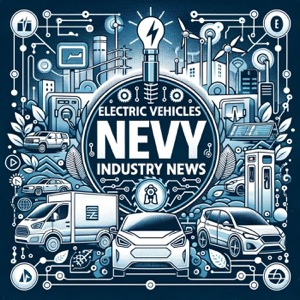"EV Industry Evolves: Soaring Sales, Tariff Impacts, and Innovative Strategies in 2025"
Electric Vehicles Industry News - En podcast av Quiet. Please

The electric vehicle (EV) industry is experiencing notable developments in early April 2025, reflecting shifts in market dynamics, consumer behavior, and regulatory landscapes.Growth within established EV companies, such as Nio, has been significant. Nio reported delivering 15,039 vehicles in March 2025, marking a 26.7% year-on-year increase. Additionally, its first-quarter delivery figures rose by 40.1% compared to the same period last year, reaching 42,094 vehicles. Nio also launched its executive flagship EV, the ET9, which integrates advanced technologies to set new benchmarks in the sector[1]. Meanwhile, Rivian introduced a fresh leasing incentive offering up to $10,500 in savings when trading in any vehicle for certain models, a strategy aimed at boosting adoption amid stiff competition[4].Legacy automakers are leveraging aggressive pricing and financing to clear older inventory. Brands like Kia, Ford, and Subaru are advertising zero percent annual percentage rate (APR) financing across several EV models, which comes amidst looming tariffs that could elevate import prices. These tariffs, introduced by the U.S. government on April 2, 2025, impose a 25% duty on imported vehicles and parts, risking increased costs for several EVs produced outside the U.S., such as the Toyota bZ4X and Jeep Wagoneer S[8][6]. Incentives aside, concerns about supply chains remain. The industry is bracing for tariff-induced disruptions that may tighten EV availability and inflate prices. However, this has not slowed down product innovation within the sector. Ferrari, for example, plans to release its first electric supercar this year, signaling progress even in the luxury EV segment[9].Consumer interest in EVs appears to remain strong, encouraged by financing offers, rising environmental awareness, and broader adoption in regions like Europe and China. However, the U.S. sees resistance among some buyers due to range anxiety and cost concerns[3].In comparison to 2024, these developments reflect both continuity and adaptation in the EV sector. Established companies are consolidating their positions with new products and customer-centric strategies, while challenges like tariffs and supply chain vulnerabilities continue to test the industry's resilience. Leaders are responding by amplifying incentives, releasing innovative models, and seeking solutions for cost efficiency and market expansion.
